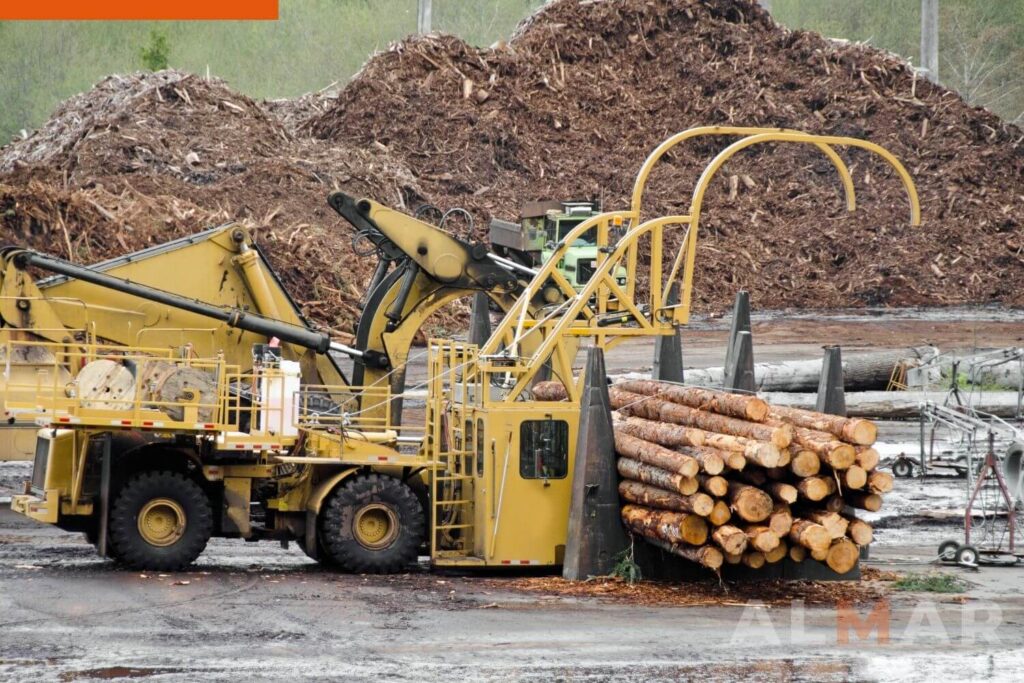When we think about demolition, the first thing that comes to mind is typically destruction or removal. However, what if we approached the demolition process not as an end in and of itself, but rather as an opportunity for sustainability and resource conservation? This is where salvaging materials come into play.
Salvaging materials is the practice of recovering and reusing construction materials during the demolition process, promoting environmental preservation and waste reduction. Thus, we can reduce the amount of waste that goes into landfills and conserve valuable resources.
1. The Importance of Salvaging Materials
Salvaging materials is a vital practice for promoting environmental preservation, waste reduction, and resource conservation. The construction industry is responsible for producing a significant amount of waste, and salvaging materials can help reduce the amount of waste that ends up in landfills. Moreover, reusing salvaged materials can decrease the demand for new materials, which in turn saves resources such as energy, water, and raw materials.

2. Salvaging Methods and Techniques
When salvaging materials from a demolition site, there are numerous options available for reuse in new construction projects. Some of the most commonly salvaged materials include:
- Deconstruction: This method involves carefully disassembling a structure by hand, and salvaging components such as windows, doors, and flooring. This process allows for the recovery of materials in their original form and minimizes waste.
- Selective Dismantling: Used for larger structures, this technique selectively removes sections of a building, such as the roof or frame, by mechanically separating them from the structure in a controlled manner.
- Salvaging Tools and Equipment: Innovative tools and equipment are used to assist in the demolition process, including excavators with specialized attachments, mobile crushers, and automated sorting systems.
3. Materials Suitable for Salvaging
Safety is a core value at Almar Demolition, and it extends to every aspect of our projects, including material salvage. Before commencing any demolition work, we conduct thorough safety assessments to identify potential hazards and risks. Our team uses the necessary personal protective equipment (PPE) and adheres to safety protocols, ensuring that no one’s well-being is compromised during the salvaging process.
- Wood: Can be repurposed for flooring, furniture, and decorative accents, or used for fuel
- Bricks: May be cleaned and used in landscaping or new construction projects
- Metal: Can be melted down and recycled into new products or used as decorative or structural elements
- Glass: May be repurposed for windows, doors, and decorative elements, or used as fill material in concrete
- Architectural Elements: Can be reused in new construction projects, providing unique character and historical authenticity. By salvaging these materials, construction companies can reduce waste and conserve resources, while also promoting sustainable building practices. Additionally, incorporating salvaged materials into building design can add a unique touch of character and style to any project.

4. Salvaging Materials and Cost Savings
One of the significant benefits of salvaging materials is the potential for cost savings when completing demolitions for commercial projects and construction. Salvaging materials for reuse can significantly reduce procurement costs and decrease overall project expenses.
Moreover, using salvaged materials contributes to a lower environmental impact, reducing disposal and transportation costs associated with waste management.
5. Salvaging Materials and Community Engagement
Salvaging materials offers numerous benefits beyond sustainability and resource conservation. One such benefit is the potential for community engagement.
When construction companies prioritize salvaging materials, they create opportunities for local residents to participate in the process. This involvement can include job creation for individuals to help with the deconstruction and salvaging of the materials, as well as opportunities for educational programs that teach the community about sustainable building practices.
Additionally, involving the community in salvaging materials can foster a sense of shared responsibility for sustainable practices. As residents witness the positive impact of repurposing materials, they may also be motivated to make changes in their own homes and businesses to reduce waste and promote sustainability.
6. Challenges and Limitations of Salvaging Materials
While salvaging materials has numerous benefits, it is not without its challenges and limitations. One of the major challenges faced is safety concerns, as workers may be exposed to hazardous materials during the salvage process. This can be mitigated through proper training and protective gear, but it remains a significant risk.
Logistics is another factor that can pose challenges during salvaging, especially when dealing with large-scale projects. Transportation, storage, and sorting of salvaged materials require careful planning and execution, often involving specialized equipment and personnel.
Quality control is an additional concern when salvaging materials, as the integrity and condition of the salvaged materials can vary widely. Proper assessment and testing are necessary to ensure that the materials are suitable for reuse.
Compatibility with modern building standards is also a potential limitation of salvaging materials. Building codes and regulations may require certain materials or construction methods that are not easily achieved with salvaged materials. However, advancements in technology and innovative design approaches are expanding the range of salvaged materials that can be used in modern architecture.
Addressing these challenges and limitations is essential to effectively reduce waste and promote sustainability in the construction industry. Moreover, it requires collaboration and strategic planning among stakeholders, such as architects, contractors, and salvage companies, to overcome these obstacles and achieve successful salvaging practices.
At Almar Demolition, we understand the significant role that salvaging materials play in promoting sustainability within the construction industry. Our approach to demolitions and renovations focuses on reducing waste, conserving resources, and fostering environmental preservation. By salvaging materials, we not only contribute to more eco-conscious and responsible building practices but also offer cost savings and support for local communities.
For more information or to request a free, detailed quote, contact ALMAR Demolition at (647) 575-5085.
